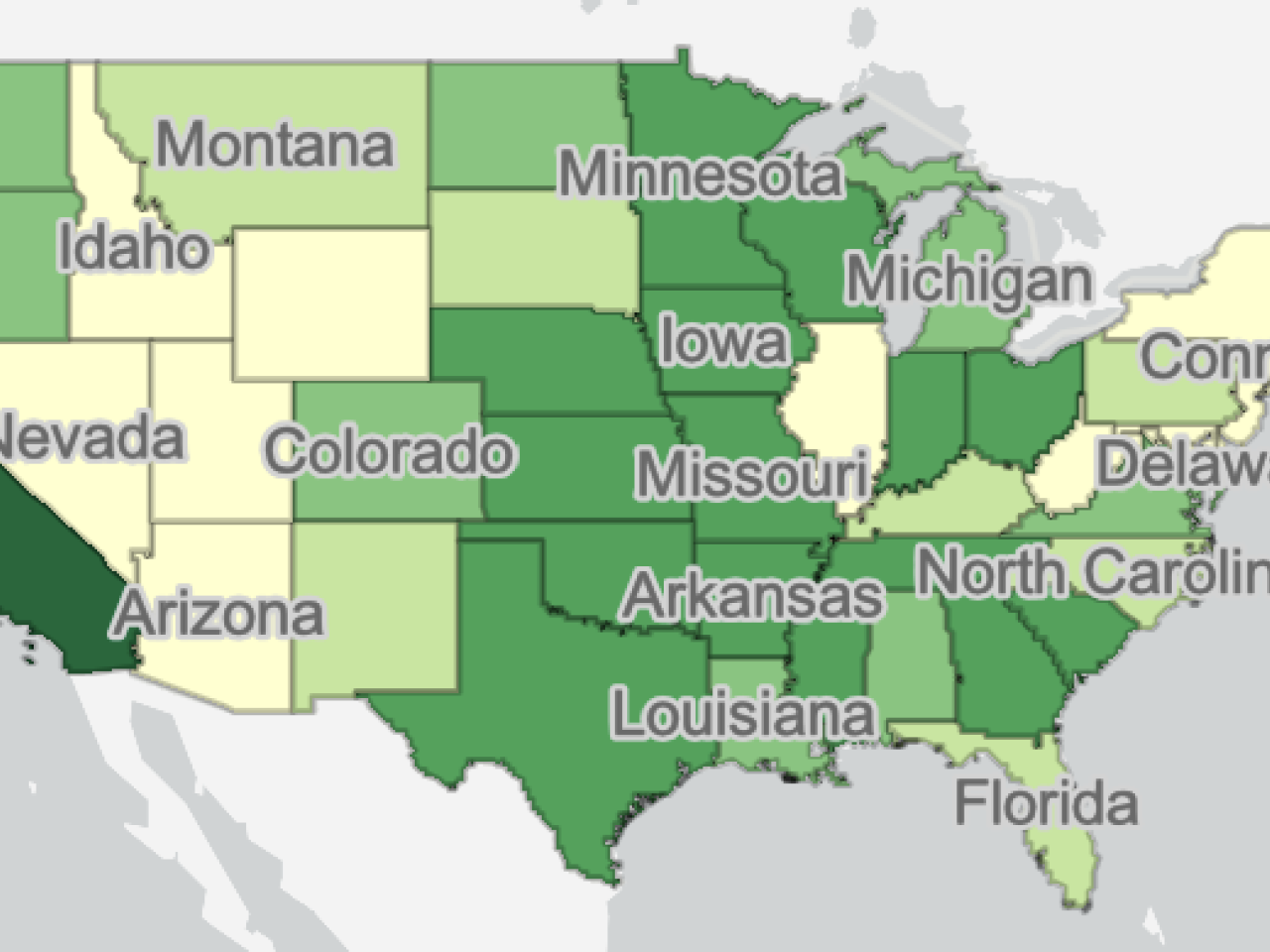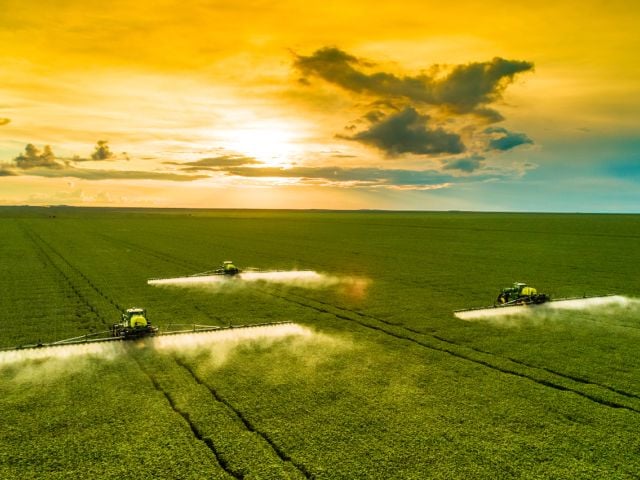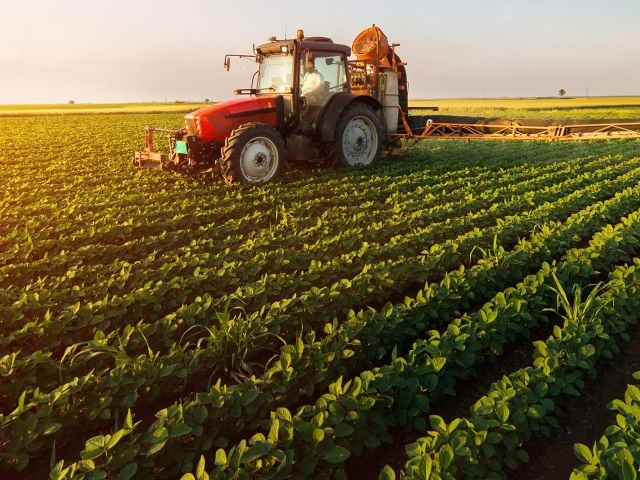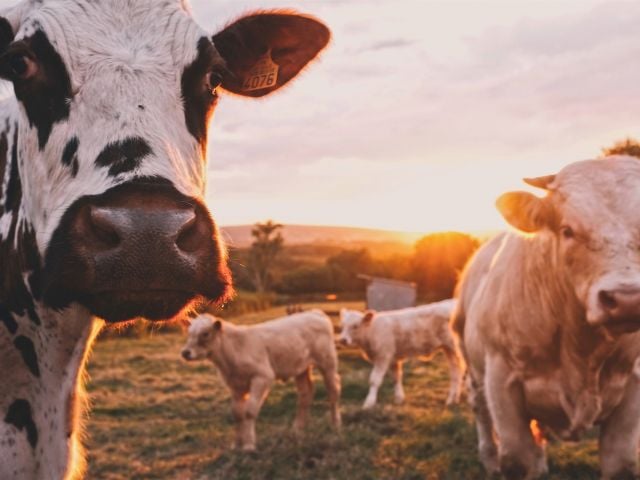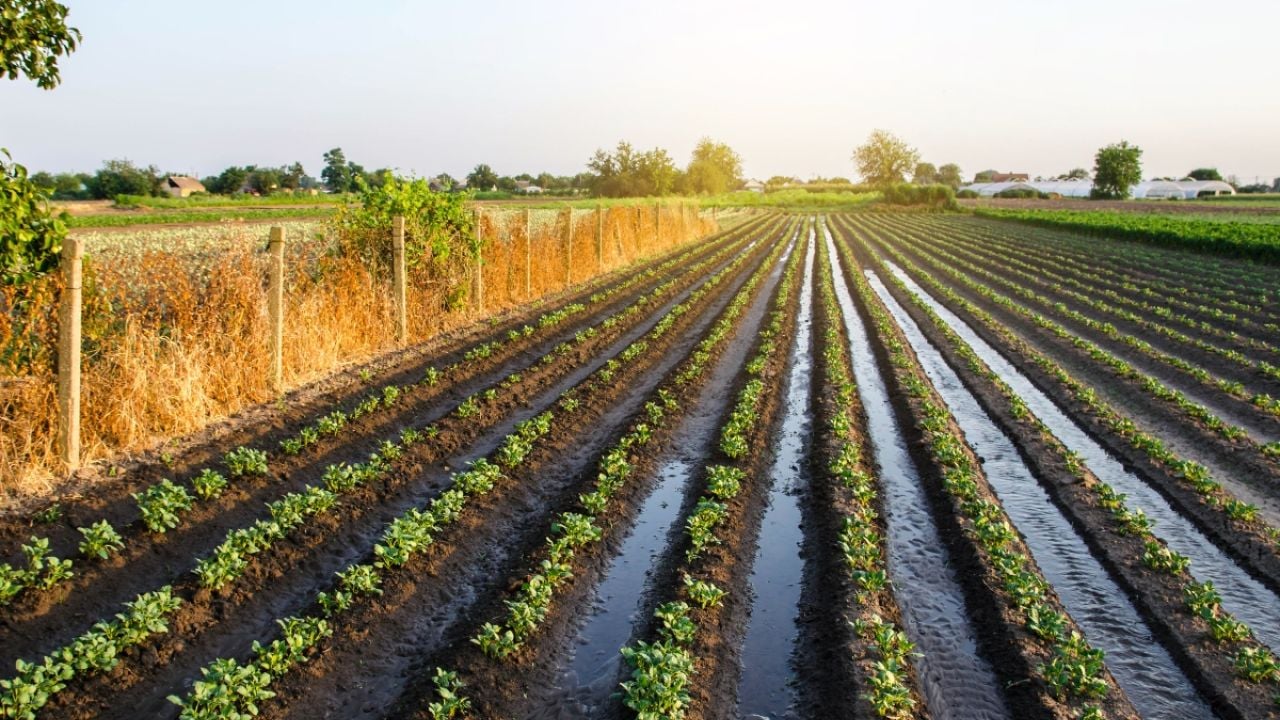
Overview
- Newly designated USDA climate-smart conservation practices likely don’t reduce agriculture’s greenhouse gas emissions.
- Only practices that reduce emissions are eligible for $19.5 billion in 2022 Inflation Reduction Act funds.
- The new designations make it look, erroneously, like a lot of money is going to climate-smart agriculture.
Against the backdrop of the deepening climate crisis, the Department of Agriculture recently added 15 Environmental Quality Incentives Program, or EQIP, practices to its climate-smart conservation list – but many likely do little or nothing to help in the climate fight, a new EWG analysis of USDA data finds.
The new data is compiled in EWG’s just-updated Conservation Database. EQIP is one of the USDA’s largest conservation programs, helping farmers implement environmentally beneficial practices.
Some of the newly designated climate-smart practices already receive, by far, the most dollars from EQIP. So the revision of the list conveniently makes it look as though a large share of federal conservation funding will now go to climate-smart farming, providing a misleading picture of agriculture and climate in the U.S.
In 2022, EWG found that only a small portion of EQIP funding went to farmers’ implementation of climate-smart methods. The USDA's new list changes the equation significantly, effectively doubling climate-smart funding: Instead of 31 percent of EQIP funds subsidizing climate-smart farming between 2017 and 2022, it now appears that 63 percent did.
And the new climate-smart practices are about to get even more money, because they’re eligible to receive additional funds through the Inflation Reduction Act, or IRA. This money totals about $19.5 billion, $8.45 billion of which is meant specifically for EQIP practices that reduce greenhouse gas emissions or sequester carbon in soil between fiscal years 2023 and 2026.
But many of the newly labeled practices likely do not have climate benefits. Eight of them are methods for irrigation and livestock management that likely don’t reduce emissions. One even increases emissions, according to USDA’s own data.
The USDA’s conservation agency, the Natural Resources Conservation Service, or NRCS, says that in 2024 it will study the possible climate benefits of the newly added practices.
Until then, the USDA should remove them from its climate-smart list. No IRA funds should underwrite them without proof they actually reduce greenhouse gas emissions.
Climate-smart conservation is intended to provide real climate benefits
For the past few years, the NRCS has made a list of practices funded through EQIP and the Conservation Stewardship Program, one of its other tentpole conservation programs, that it considers climate-smart. The practices on this list are intended to cause “quantifiable reductions in greenhouse gas emissions and/or increases in carbon sequestration.”
In fiscal year 2023, the NRCS climate-smart list included 45 EQIP practices for which farmers received payments at some point between 2017 and 2022. (Other practices on the list didn’t get funding.) The funded practices included those with proven climate benefits, such as “cover crops,” “nutrient management” and “grassed waterways.”
In October 2023, the NRCS updated its list of climate-smart practices for fiscal year 2024. The roster now has 57 EQIP practices that received funding between 2017 and 2022, including 15 new additions (not including two practices that were removed). (See Table 1.) Only 14 of the 15 newly added practices got any funding between 2017 and 2022. “Soil carbon amendment” was added to the list for 2024 but didn’t receive any funds.
Table 1. 2024 climate-smart EQIP practices.*
|
EQIP practices added to USDA's 2024 climate-smart conservation list |
EQIP practices removed from USDA's climate-smart conservation list for 2024 |
*List only includes 14 practices that received money between 2017 and 2023. It does not include “Soil carbon amendment,” which did not.
Source: EWG, from public records requests for USDA-NRCS program data.
Many practices newly labeled climate-smart likely don’t benefit the climate
Of the 14 newly added (and funded) practices, more than half – eight – are irrigation or livestock practices, such as “waste storage facility” and “irrigation pipeline.”
The NRCS is calling all of these practices “provisionally” climate-smart – it cannot yet show whether they reduce emissions, so they have no proven climate benefits.
And “waste storage facility,” a structure that contains animal waste, increases greenhouse gas emissions, according to the data USDA does have.
These livestock practices are almost certainly not climate-smart. Agriculture contributes more than 10 percent of U.S. greenhouse gas emissions, with livestock a major source – particularly beef and dairy cattle, which emit vast quantities of methane.
EQIP funding to manage large amounts of livestock in concentrated facilities encourages farmers to keep relying on this model instead of raising animals on pasture, which could help to lower emissions.
Irrigation practices are also not clearly climate-smart. Although EQIP irrigation practices seem to enable more efficient water use, they do not always reduce total water use, especially in the West, where many farmers’ water rights follow “use it or lose it” policies.
In these cases, if a water rights holder does not use all their water allocation, they forfeit the rest, so they have an incentive to use the most they can. So installing more efficient irrigation wouldn’t necessarily save any water.
The IRA text says $8.45 billion of its funding should go only to EQIP practices that reduce greenhouse gas emissions or sequester carbon in soil – in other words, to the practices on the NRCS climate-smart list.
So calling the livestock and irrigation practices climate-smart, provisionally or not, is problematic, since the IRA states that its agricultural funding should go to conservation practices that reduce emissions or sequester carbon.
The NRCS has said it will study provisional practices in 2024 to measure their greenhouse gas emission reductions, if any. It has also said if it does not find benefits, it may remove the provisional practices from the climate-smart list for the following year.
But history would show that these practices may not be studied in 2024: All eight provisional practices on the 2023 list remain on the list for 2024 – and all are still listed as provisional.
New list creates alternate reality where lots of money has gone to climate-smart farming
Some of the practices just added to the 2024 climate-smart list received the most EQIP funding between 2017 and 2022 – painting an inaccurate picture of a lot of money going to practices that reduce greenhouse gas emissions. But because many of these new provisional practices likely do not reduce emissions, only a small share of EQIP spending is actually going to practices with proven climate benefits.
EQIP sent $5.5 billion to farmers across all practices between 2017 and 2022. Only $1.7 billion of this, or 31 percent, went to practices on the 2023 climate-smart list, most of which have been proven to reduce emissions or sequester carbon in soil.
But with the addition of the 14 funded provisional practices for 2024, that amount more than doubled to $3.47 billion – or 63 percent of all EQIP spending.
That’s because many of the practices added to the 2024 list are the most-funded practices in the whole program. The 10 practices with the most total EQIP payments made up $2.65 billion between 2017 and 2022 – almost half of all EQIP spending. Only two of these, “cover crops” and “forest stand improvement,” were on the 2023 climate-smart list.
But when the list was revised for 2024, eight of the 10 practices with the most program funding appeared on it. In addition to the two from 2023, these included “brush management”; “irrigation system – sprinkler”; “waste storage facility”; “irrigation pipeline”; “waste facility cover”; and “irrigation system – micro irrigation.” (See Table 2.) Five of these six practices are livestock or irrigation practices.
Of the 10 practices with the most EQIP payments, the only two not on the 2024 climate-smart list were “fence” and “pipeline,” which brings water to livestock or wildlife.
Table 2. Almost all the 10 EQIP practices with the most payments between 2017 and 2022 were added to the 2024 climate-smart practice list.
|
Practice rank |
Practice name |
EQIP payments 2017-2022 |
Percent of all EQIP payments |
On 2023 climate-smart list? |
On 2024 climate-smart list? |
|
1 |
$504,812,892 |
9% |
Yes |
Yes |
|
|
2 |
$314,991,152 |
6% |
No |
Yes |
|
|
3 |
$313,561,007 |
6% |
No |
Yes |
|
|
4 |
$311,036,533 |
6% |
No |
No |
|
|
5 |
$252,142,865 |
5% |
No |
Yes |
|
|
6 |
$230,101,825 |
4% |
No |
Yes |
|
|
7 |
$228,568,531 |
4% |
No |
Yes |
|
|
8 |
$175,194,972 |
3% |
No |
Yes |
|
|
9 |
$162,365,526 |
3% |
No |
No |
|
|
10 |
$159,735,684 |
3% |
Yes |
Yes |
|
| Total top 10 practices |
$2,652,510,988 |
48% |
|||
Source: EWG, from public records requests for USDA-NRCS program data.
Addition of provisional practices to climate-smart list changes states receiving IRA funds
Expanding the climate-smart list will also change where the IRA money goes.
Across EQIP, payments are concentrated in just a few places – 44 percent of the money spent between 2017 and 2022 went to just 10 states. Similarly, 45 percent of payments to practices on the 2023 climate-smart list went to farmers in just 10 states, and 46 percent of payments to practices on the 2024 list went to farmers in the 10 states with the most payments.
When the list changed, so did the states that got the most climate-smart money. California and Texas were the top two on both lists, but the others changed drastically.
Seven of the top 10 states on the 2023 list were located in the Mississippi River Critical Conservation Area, a region of the country with important agricultural, industry, wildlife and ecological resources. But only four of the top 10 states on the 2024 climate-smart list were located in the conservation area (Table 3). Now Southern and Western states like Colorado, Georgia and Oregon will receive more so-called climate-smart funding.
Table 3. The 10 states that received the most payments between 2017 and 2022 for practices on the 2023 climate-smart list, compared to those on the 2024 list.
| State rank | States with the most payments for 2023 list | Payments 2017-2022 for practices on 2023 list | States with the most payments for 2024 list | Payments 2017-2022 for practices on 2024 list |
| 1 | California | $167,970,025 | Texas | $371,894,245 |
| 2 | Texas | $99,642,015 | California | $359,871,676 |
| 3 | Missouri | $69,273,408 | Georgia | $137,069,838 |
| 4 | Indiana | $65,270,184 | Colorado | $118,425,439 |
| 5 | Tennessee | $64,641,082 | Arkansas | $110,504,198 |
| 6 | Wisconsin | $57,753,631 | Mississippi | $100,305,742 |
| 7 | Iowa | $55,750,215 | Oregon | $93,274,547 |
| 8 | Ohio | $55,410,931 | Oklahoma | $91,351,469 |
| 9 | Oklahoma | $55,025,391 | Indiana | $91,034,785 |
| 10 | Mississippi | $54,055,521 | Ohio | $90,089,372 |
| Total 10 states | $744,792,403 | Total top 10 states | $1,563,821,311 |
Source: EWG, from public records requests for USDA-NRCS program data.
The map below shows which states received the most money for practices on the 2023 climate-smart list, compared to those that got the most money for practices on the 2024 list.
By adding more irrigation and livestock practices to EQIP’s climate-smart list, the USDA will use IRA funds for practices that likely do not reduce emissions and will change which states benefit most from the funding.
